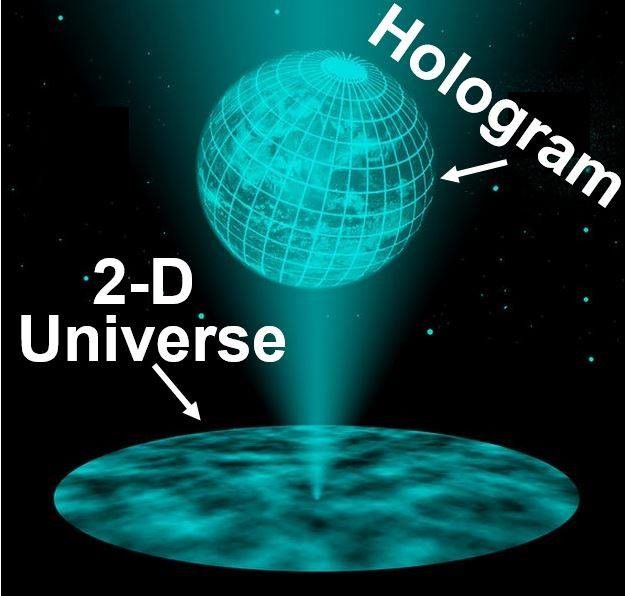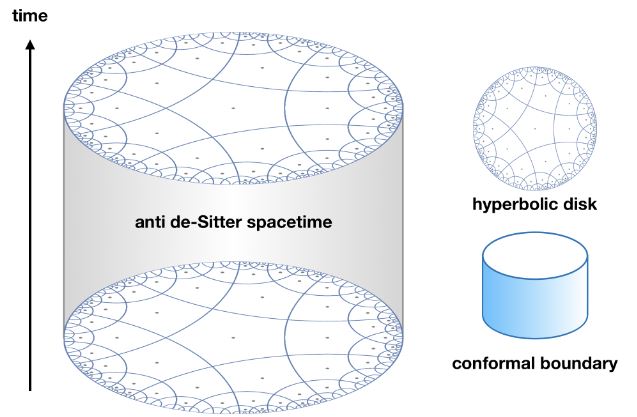Introduction
The idea that our universe may be a vast hologram is one of the most intriguing and mind-bending concepts in modern physics. The Hologram Theory suggests that everything we perceive as three-dimensional could actually be a projection of information stored on a distant, two-dimensional surface. This revolutionary idea emerges from quantum mechanics, string theory, and black hole physics, challenging our traditional understanding of space, time, and reality itself. If the universe is a hologram, what does this mean for our perception of existence? Could this theory provide answers to some of the deepest mysteries of the cosmos?
Understanding the Hologram Analogy
To grasp this concept, imagine a 3D movie projected onto a screen. The images appear three-dimensional, but the actual information exists on a flat surface. Similarly, the universe we experience could be a 3D projection of data encoded on a distant 2D boundary. This boundary might exist at the cosmic horizon, an infinitely large celestial sphere that holds all the information about our reality.
One compelling example supporting this theory comes from black holes. A black hole has an event horizon, a boundary beyond which nothing, not even light, can escape. Some physicists propose that all the information within a black hole is stored on its event horizon. Extending this idea, it is possible that all the information about the universe is encoded on a faraway boundary, just as in a holographic projection.

AdS/CFT Correspondence and Holographic Duality
The holographic principle finds strong support in a concept called AdS/CFT correspondence. This principle originates from string theory and describes a mathematical relationship between a gravitational system and a quantum field theory (QFT) on its boundary.
- Anti-de Sitter Space (AdS) represents the higher-dimensional bulk where gravity operates.
- Conformal Field Theory (CFT) exists on the lower-dimensional boundary, encoding the same information as the bulk.
- Every physical event in the AdS bulk has a corresponding description in the CFT boundary.
Physicists describe AdS space as a stack of hyperbolic discs, where time runs vertically. Each disc represents the universe at a specific moment. The holographic theory suggests that the boundary of this space encodes all the information about the universe, effectively making our 3D world a shadow of a more fundamental 2D reality. What if our universe isn’t an AdS space? Is our universe still a hologram then?

Extending Holography Beyond AdS Space
Most discussions on the holographic principle focus on AdS space. But what if we applied it to our observable universe, which is not necessarily AdS? Some physicists propose that the universe can be modeled as an infinitely large sphere with a spherical boundary, known as the celestial sphere. In this scenario,
A 2D Conformal Field Theory (CFT) on the celestial boundary could encode physical information about the entire bulk universe.
This approach could reshape how we understand gravity, space-time, and even quantum mechanics itself.
Quantum Entanglement and the Fabric of Space-Time
Quantum mechanics supports the idea of a holographic nature of reality. Several theories suggest that space-time is not continuous but composed of discrete units. One such approach, Loop Quantum Gravity, merges quantum mechanics with general relativity by proposing that space-time consists of tiny loops within spin networks. Another approach posits that space-time comprises discrete cells updated by rules, akin to a simulation with finite resolution. Inspired by computer science, it views space-time’s smallest units as pixels or bits—a highly speculative yet intriguing idea. Quantum cellular automata models these discrete cells as qubits, the basic units of quantum information. If space-time is quantized, then the quanta of space-time, and possibly the quantum particles within it, could be entangled with corresponding quantum states on a celestial boundary. This boundary might serve as a holographic map, encoding all quantum interactions within the universe.
Quantum Teleportation and Holographic Information Transfer
If quantum entanglement is responsible for space-time structure, then quantum teleportation could provide a mechanism for holographic information transfer between the boundary and the bulk. In this view:
- The holographic principle states that information in a volume is encoded on its boundary.
- Quantum teleportation enables information exchange between entangled boundary and bulk.
- If this entanglement is strong, quantum teleportation could enable information transfer between the boundary and bulk. This will potentially allow the boundary to control the bulk.
One thing we need to remember, is that this theory is highly speculative.
Visualizing Holographic Reality
Imagine two puppets controlled by strings. These puppets exist in different locations, yet their movements are synchronized because they are controlled by the same source. The puppets represent space-time units, while the strings represent quantum entanglement between these units and the celestial sphere. If one string is manipulated, the corresponding space-time unit reacts instantly, similar to a quantum teleportation event.
Alternatively, consider looking into a perfect mirror. Every point on your body has an entangled counterpart on the mirror’s surface. When you move, your reflection moves instantly. If the universe works similarly, altering the celestial sphere might instantly reshape space-time at the corresponding location.
Implications of the Holographic Universe
If the holographic principle is correct, it could revolutionize physics and our understanding of reality:
- Unifying Quantum Mechanics and Gravity – A holographic framework could explain how gravity emerges, bridging the gap between quantum mechanics and general relativity.
- Solving the Black Hole Information Paradox – Information falling into a black hole might never be lost, as its entangled counterpart could exist on the celestial boundary.
- Redefining Reality – If reality is a projection, then what we experience as solid and tangible might be an illusion, much like a video game rendering a 3D world from 2D code.
- Potential for Cosmic Control – If the celestial sphere holds the “code” for reality, manipulating it could allow for controlled changes to space-time itself, much like a programmer altering a digital simulation.
Conclusion
The Hologram Theory challenges our fundamental assumptions about reality, space, and time. While still theoretical, it provides a compelling framework for understanding deep cosmic mysteries, from black hole physics to the very nature of existence. If our universe is indeed a hologram, we may need to rethink what it means to be “real.” Future research will determine whether this concept is an abstract mathematical tool or a profound insight into the true nature of our universe. Either way, the question remains: Is our universe a hologram? And if so, what lies beyond the projection?
Sources:
https://en.wikipedia.org/wiki/Anti-de_Sitter_space
https://www.sciencedirect.com/topics/engineering/quantum-teleportation